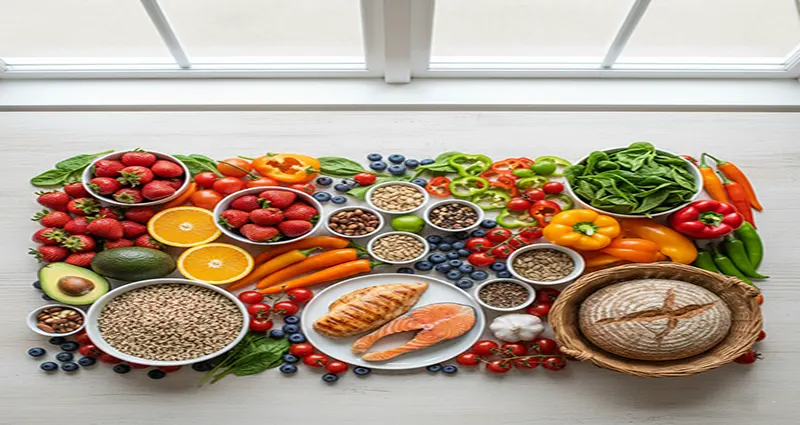Starting a healthy, balanced diet shouldn’t feel like a punishment. The common perception that “dieting” means endless restriction often leads to burnout and giving up. In reality, a truly sustainable, healthy diet is about addition, not subtraction, focusing on incorporating nourishing foods and building positive habits.
The key to starting a balanced diet without feeling restricted is to embrace flexibility, moderation, and mindful eating. Here’s a simple guide to shifting your mindset and making healthy eating a sustainable part of your life.
1. Shift Your Mindset: Focus on Adding Good Things
Instead of viewing a diet as a list of “off-limits” foods, reframe it as a list of foods you get to eat more of. This psychological shift drastically reduces feelings of deprivation.
- Be a Food Maximizer: Focus on adding nutrient-dense items to every meal. Think: “How can I sneak one more vegetable onto this plate?” or “What whole grain can I substitute for a refined one?”
- Embrace Variety: A balanced diet is inherently not restrictive because it encourages you to eat from all major food groups: lean proteins, whole grains, fruits, vegetables, and healthy fats. The wider the variety of foods you eat, the more nutrients you consume and the less likely you are to feel bored or restricted.
- The 80/20 Rule: Adopt the principle of eating nourishing, balanced meals about 80% of the time and allowing yourself room for less-nutritious, enjoyable foods the remaining 20% of the time. This built-in flexibility makes the overall plan sustainable and removes the guilt associated with “cheating.”
2. Prioritize Protein, Fiber, and Healthy Fats
The most effective way to prevent restrictive cravings and feel full longer is to build your meals around foods that promote satiety.
- Protein is Your Ally: Include a source of lean protein (chicken, fish, eggs, legumes, tofu) in every meal. Protein takes longer to digest, helping to stabilize blood sugar and keep hunger at bay.
- Focus on Fiber: Fiber-rich foods—like vegetables, fruits with the skin on, beans, and whole grains (oats, brown rice, quinoa)—add volume to your meals and support gut health. When your stomach feels physically full from fiber, your mind doesn’t jump to the idea of “restriction.”
- Don’t Fear Healthy Fats: Healthy fats from sources like avocado, nuts, seeds, and olive oil are crucial for hormone health and absorbing fat-soluble vitamins. A meal that lacks healthy fat will often leave you feeling unsatisfied, driving you to snack later.
3. Plan for Your Cravings (Don’t Fight Them)
Trying to eliminate your favorite foods completely is a recipe for failure and binge-eating. Instead, plan how you can incorporate them responsibly.
- Find Healthy Swaps: If you crave chips, try air-popped popcorn or roasted chickpeas. If you crave sweets, have a piece of dark chocolate or a simple bowl of fruit with yogurt. This satisfies the psychological need for that flavor/texture without derailing your goals.
- Practice Mindful Indulgence: When you do have a treat, don’t eat it standing up over the sink. Put a single serving on a plate, sit down, and truly savor it. This prevents the “all-or-nothing” mentality where one cookie leads to the entire box because you’ve already “ruined” your diet.
- Control Your Environment: Keep indulgent, tempting items out of sight or out of the house entirely. When you do your grocery shopping, aim to fill your cart with wholesome, nourishing foods, making the healthy choice the easy choice.
4. Stay Hydrated and Eat on a Schedule
Often, what feels like a food craving is actually thirst or a dip in blood sugar.
- Drink Your Water: Thirst can often be mistaken for hunger. Keep a water bottle handy and make an effort to drink water throughout the day. Starting your day with a large glass of water can immediately improve your energy and digestion.
- Eat Regular Meals: Skipping meals causes your blood sugar to crash, leading to intense hunger and impulsive food choices. Establish a consistent eating schedule (3 meals and 1-2 snacks, if needed) to maintain steady energy and prevent the kind of desperate hunger that makes any healthy option feel restrictive.
By making small, sustainable additions and allowing for a flexible, forgiving approach, you can successfully transition to a healthy, balanced diet that supports your well-being without making you feel trapped or deprived.










